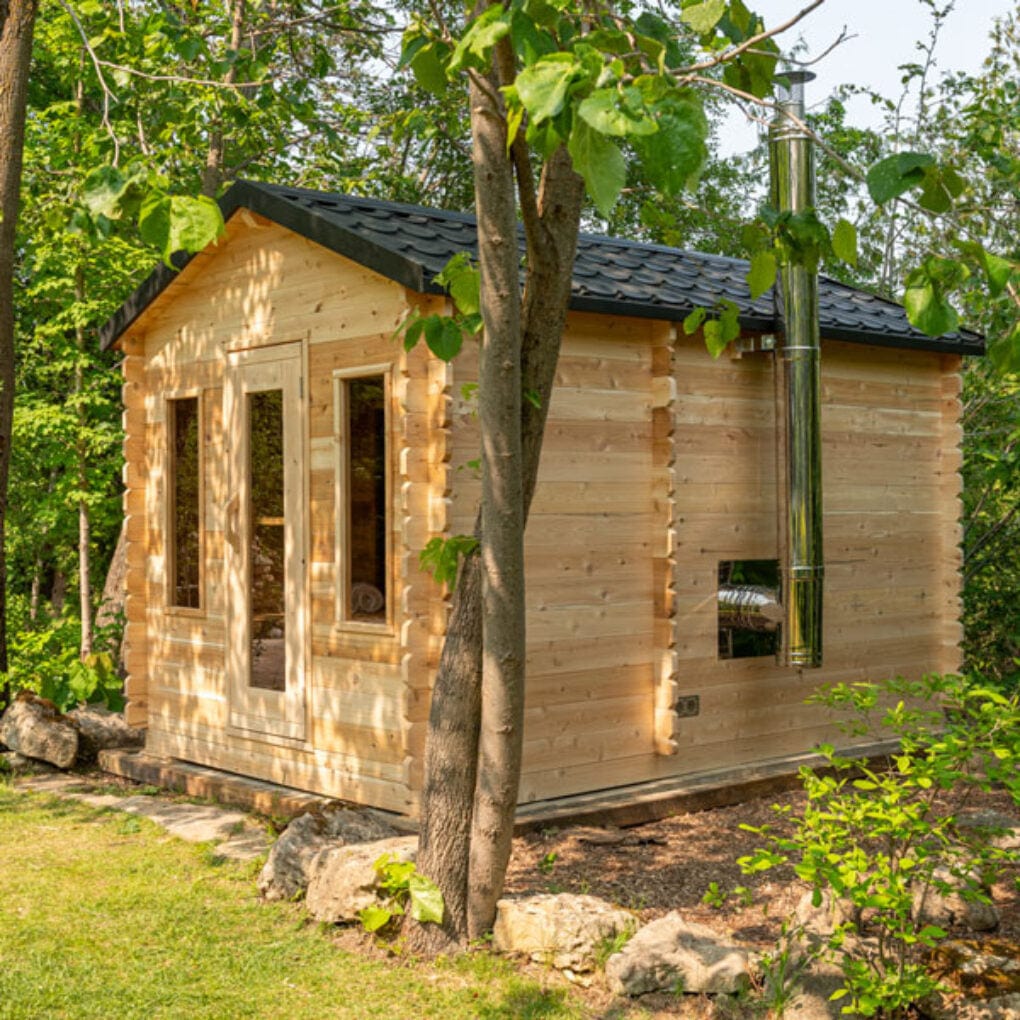Little Known Questions About Traditional Sauna.
Table of ContentsTraditional Sauna Fundamentals ExplainedThe Facts About Traditional Sauna RevealedAll About Traditional SaunaWhat Does Traditional Sauna Mean?
A lot of the weight shed in a sauna is water loss and is re-gained upon rehydrating. Without a question sauna can be a crucial component of a healthy and balanced weight loss program. To look at the differences in between standard and IR saunas, I will separate these right into verifiable, theoretical, and made differences.Hence, the hottest factor in the saunawhich is at the ceiling straight over the sauna heateris generally between 185 and 190 F. Traditional Sauna. Claims that a standard sauna exceeds 200 F is merely not true and not applicable for electric saunas offered in the United States. The temperature level for a far-infrared sauna is normally established between 120 and 140 F; nevertheless, unlike the traditional sauna, the goal in and IR space is not to attain a high temperature level
Due to this, the temperature level difference is almost unnecessary, given that extreme sweating causes both sauna types, but the technique of heating up the body is various. In an IR sauna the bather will certainly feel warm and will certainly sweat profusely, but at a lot reduced temperature levels. Hence, if the goal is to spend longer time periods in the sauna, the IR sauna is an excellent option.

A Biased View of Traditional Sauna
When the heat is accomplished, the components cycle on and off to maintain the high temperature level. The majority of typical sauna customers appreciate pouring water over the rocks to produce steam to raise sauna moisture degrees. The benefits of putting water over the rocks include: making the area more comfy, dampening the nasal flows, and enabling the use of aromatherapy by blending vital oils with the water.
In a far-infrared sauna, the warmth waves permeate the body to efficiently heat up the body and raise the body core temperature. To accomplish this raised temperature level, Far-infrared emitters create infrared power which is close to the exact same wavelength as that which the body naturally emitsoften described as the "Important Range" of 7 to 14 microns), so the energy is well gotten by the body.
When the energy goes into the body, it causes the body temperature to increase and eventually causes sweat. In an infrared sauna it is essential for the emitters/heaters to continue to be on virtually continuously. Considering that there is no mass of rocks to keep warm, the sauna will cool down if the emitters closed off.
As pointed out over, the sauna bather in an infrared room wishes to position himself before running emitters to get maximum gain from the heat. The home heating time for both areas can be really different, depending upon how the areas are used. For a traditional sauna, a bather must allow 30-40 mins for the area to achieve a wanted temperature and to effectively pre-heat the rocks.
How Traditional Sauna can Save You Time, Stress, and Money.
A well built sauna will commonly accomplish a temperature of 150-160 F in regarding 30-40 minutes. For hotter temperatures, the area may require to heat for a longer period.
To some, 15 minutes was "thrown away" while the infrared energy heated up the timber panels instead of heating a body, while others discover a pre-heated area to be much more comfortable and believe an elevated starting temperature is needed to begin perspiring. The length of advised usage for each room is roughly the very same (10-15 mins per session); nonetheless, due to the lower air temperature levels and the ability to feel the effects of infrared heat quicker than a typical sauna, it is not unusual for a person to spend a total amount of 20-30 mins in an infrared sauna.
Traditional saunas often tend to be larger (for this reason use more electrical power) than infrared saunas, although typical saunas are certainly readily available in one and two individual sizes too. For a two-person typical sauna, 5x6 or 5x7 size is most preferred. The leading bench can easily seat two or three individuals and is likewise enough time to relax during the sauna session.


The ordinary cost per kWH of electricity in the U.S. is approximately $0.11, so a 4.5 check it out kW heating unit will set you back about $.50 to run for one hour, if the heater runs constantly for one hour. Usually a sauna heating system will run for 75% of the initial hour and 50% of succeeding hours on given that the elements cycle once the established temperature level is achieved.
Top Guidelines Of Traditional Sauna
A two person far-infrared space is usually physically smaller than a traditional sauna, commonly regarding 4' x 4' or smaller. The IR heater is generally 1.5-1.7 kW using a 120 volt 15 amp plug-in solution. look at here now Since the room can be utilized quicker than a sauna area, we will presume the area is utilized for to of an hour consisting of warm up time.
Lastly, there is a seldom gone over difference in the social experience between both rooms. While our society has lost some of the social benefit of the standard sauna experience, it can be extremely socially satisfying. From family members time in the sauna, to heart-felt conversations with loved ones, to sauna partiesthe conventional sauna experience can result in Continued intimate mingling.
Many greater end infrared spaces consist of colored light therapy, stereo and full-glass fronts. The size of a lot of areas permit 2 individuals to easily make use of the space, while some designs may enable for a third or 4th individual to make use of the room. Personalized infrared areas are likewise available, with area sizes offered approximately 7' x 8' x 7' high.